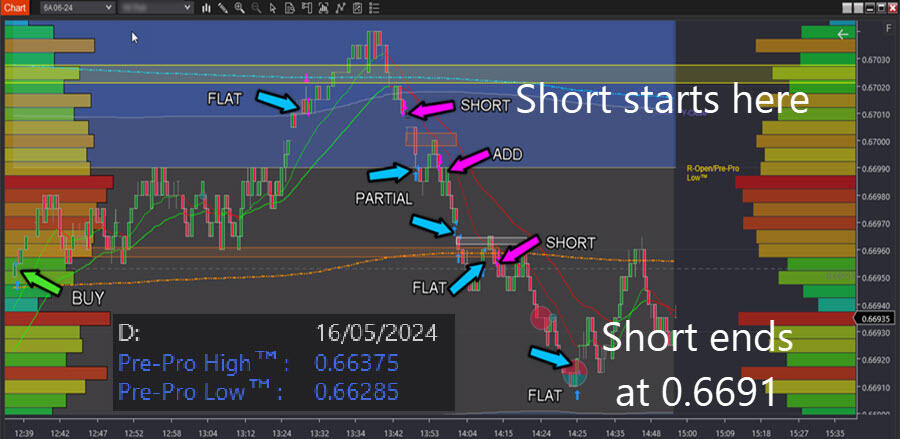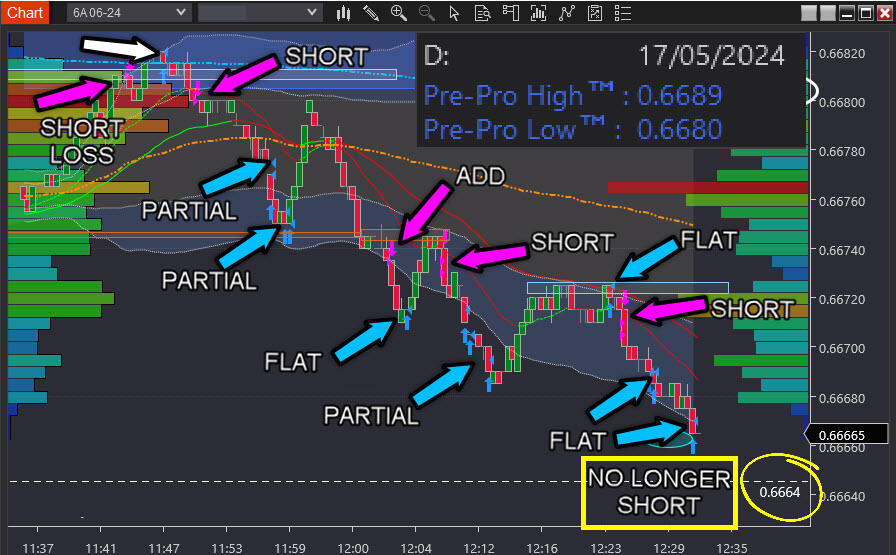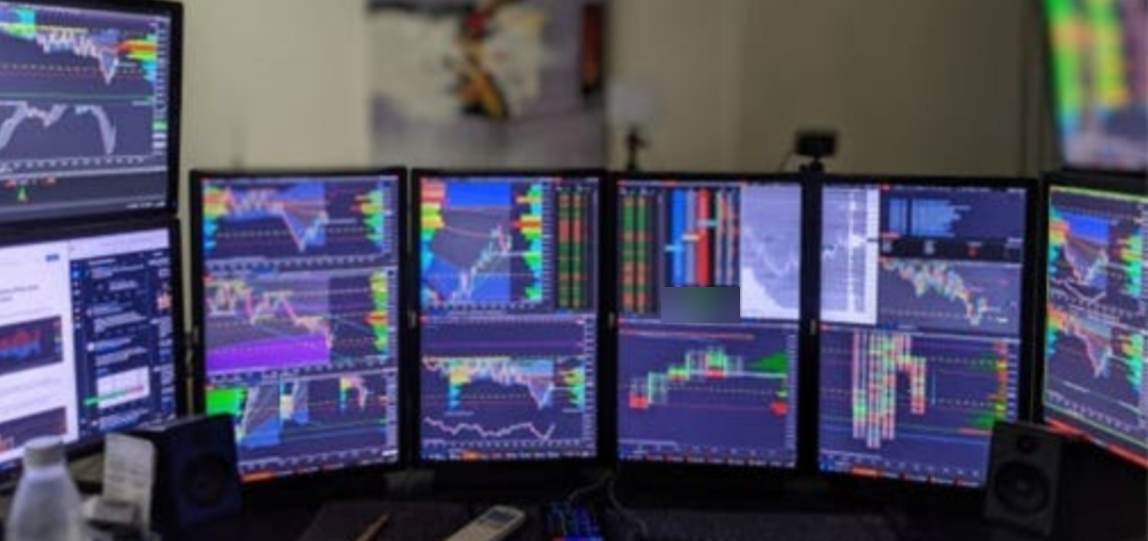Ever played the game Chinese Whispers?
Keep reading to discover how it has corrupted the real meaning of risk to reward.
In Chinese Whispers, a message is whispered from person to person. With each pass, slight variations occur until the final "version" is a mutated form of the original—missing key points and including invented ones.
Similarly, a mutation has corrupted the common understanding of risk-to-reward. And this misconception is harming most traders.
Let me illustrate with an actual trading example. But first, let's break down the flawed risk-to-reward understanding:
The typical approach goes like this: enter at $10, risk $2, target $16. A 3:1 reward-to-risk ratio sounds great, so you put on the trade.
What happens next?
You realise your target is seldom reached. Right? Maybe it works once in a blue moon, but mostly, this unfolds:
If the market moves in your favour, it inevitably retraces and stops you out before hitting the target. So you try using trailing stops, break-evens, scaling out... But you still end up losing overall more often than not.
And for some, you get so frustrated at being stopped out before the target you resort to...averaging down. And just like that you're playing Russian roulette with your account.
What's the problem?
There are two critical issues.
First, the market tells you how far it can go—but you're not listening. Not because you don't want to, but because you don't comprehend its language.
Second, you lack a playbook of strategies enabling ideal trade entries—when odds favour an immediate move in your direction seven out of ten times.
For the remaining three out of ten times, price doesn't move favourably right away. But it only needs to budge insignificantly for you to know you should exit. Think of this as a paper cut that isn't detrimental to your account.
(Quick clarification: An initial move in your favour doesn't guarantee a profitable trade. But it does create a cushion of profit. You can use this cushion to avoid a losing trade.)
Why is trading structured this way?
Simple. The trading game is deliberately opaque—to ensure the majority of traders lose to pay the few who win.
But what if you know when to enter and when to exit because you understand how the market communicates when to act? Using recent trading in the AUDUSD futures traded on the CME, let me illustrate.
On May 16th, our plan allowed trading the short side but only as far down as 0.6664.
There was no profit target—just a defined invalidation point for short trading, i.e. "No Longer Short." at 0.6664. But see how the trade ended well before reaching this price?
PS: Do you also see how the short entry works immediately?
Our plan continued into May 17. But this time price moved as far as our plan would allow for short trading. The price got close enough to 0.6664, and the trade was closed.
PS: Do you also see how the first short entry is a papercut loss?
And here's a side-by-side comparison of both days. No pre-determined profit targets.
PS: Do you also see how the exits hold onto your profits?
You're no longer wrestling with:
-
Not knowing when to take profits because the market has gone as far as it can.
-
Timing your entries for an immediate cushion or papercut loss.
Below is a photo of my trading station. The many windows you see are used in concert to know, listen, and comprehend what the market is saying.
Overwhelming?
There's no need. Just like juggling, you start with two then three, then four etc.
Your aha moment?
If you know the best action to take because you can comprehend what the market is saying, then its transformative for your trading. Agree?
In summary
Risk-to-reward ratios are delusional because trading is about probabilities revealed through understanding the market's language. That's why a battle-tested playbook of strategies is vital —both for strategic entries and avoiding either exiting too soon or exiting too late for your profits.
Forex and derivatives trading is a highly competitive and often extremely fast-paced environment. It only rewards individuals who attain the required level of skill and expertise to compete. Past performance is not indicative of future results. There is a substantial risk of loss to unskilled and inexperienced players. The high degree of leverage can work against you as well as for you. Before deciding to trade any such leveraged products you should carefully consider your investment objectives, level of experience, and risk appetite. The possibility exists that you could sustain a loss of some or all of your initial investment and therefore you should not invest money that you cannot afford to lose. You should be aware of all the risks associated with trading on margin, and seek advice from an independent
Editors’ Picks

EUR/USD clings to small gains near 1.1750
Following a short-lasting correction in the early European session, EUR/USD regains its traction and clings to moderate gains at around 1.1750 on Monday. Nevertheless, the pair's volatility remains low, with investors awaiting this weeks key data releases from the US and the ECB policy announcements.

GBP/USD edges higher toward 1.3400 ahead of US data and BoE
GBP/USD reverses its direction and advances toward 1.3400 following a drop to the 1.3350 area earlier in the day. The US Dollar struggles to gather recovery momentum as markets await Tuesday's Nonfarm Payrolls data, while the Pound Sterling holds steady ahead of the BoE policy announcements later in the week.

Gold stuck around $4,300 as markets turn cautious
Gold loses its bullish momentum and retreats below $4,350 after testing this level earlier on Monday. XAU/USD, however, stays in positive territory as the US Dollar remains on the back foot on growing expectations for a dovish Fed policy outlook next year.

Solana consolidates as spot ETF inflows near $1 billion signal institutional dip-buying
Solana price hovers above $131 at the time of writing on Monday, nearing the upper boundary of a falling wedge pattern, awaiting a decisive breakout. On the institutional side, demand for spot Solana Exchange-Traded Funds remained firm, pushing total assets under management to nearly $1 billion since launch.

Big week ends with big doubts
The S&P 500 continued to push higher yesterday as the US 2-year yield wavered around the 3.50% mark following a Federal Reserve (Fed) rate cut earlier this week that was ultimately perceived as not that hawkish after all. The cut is especially boosting the non-tech pockets of the market.
RECOMMENDED LESSONS
Making money in forex is easy if you know how the bankers trade!
I’m often mystified in my educational forex articles why so many traders struggle to make consistent money out of forex trading. The answer has more to do with what they don’t know than what they do know. After working in investment banks for 20 years many of which were as a Chief trader its second knowledge how to extract cash out of the market.
5 Forex News Events You Need To Know
In the fast moving world of currency markets where huge moves can seemingly come from nowhere, it is extremely important for new traders to learn about the various economic indicators and forex news events and releases that shape the markets. Indeed, quickly getting a handle on which data to look out for, what it means, and how to trade it can see new traders quickly become far more profitable and sets up the road to long term success.
Top 10 Chart Patterns Every Trader Should Know
Chart patterns are one of the most effective trading tools for a trader. They are pure price-action, and form on the basis of underlying buying and selling pressure. Chart patterns have a proven track-record, and traders use them to identify continuation or reversal signals, to open positions and identify price targets.
7 Ways to Avoid Forex Scams
The forex industry is recently seeing more and more scams. Here are 7 ways to avoid losing your money in such scams: Forex scams are becoming frequent. Michael Greenberg reports on luxurious expenses, including a submarine bought from the money taken from forex traders. Here’s another report of a forex fraud. So, how can we avoid falling in such forex scams?
What Are the 10 Fatal Mistakes Traders Make
Trading is exciting. Trading is hard. Trading is extremely hard. Some say that it takes more than 10,000 hours to master. Others believe that trading is the way to quick riches. They might be both wrong. What is important to know that no matter how experienced you are, mistakes will be part of the trading process.
The challenge: Timing the market and trader psychology
Successful trading often comes down to timing – entering and exiting trades at the right moments. Yet timing the market is notoriously difficult, largely because human psychology can derail even the best plans. Two powerful emotions in particular – fear and greed – tend to drive trading decisions off course.




